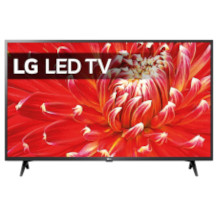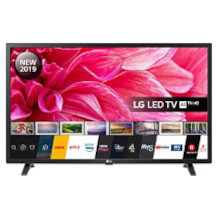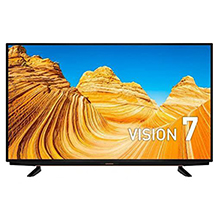65-inch TV purchasing advice: how to choose the right product
- The most important facts in brief
- 65-inch TVs combine the advantages of TVs and special home cinema equipment such as beamers.
- The growing demand for large TVs means that prices are low and there is a wide choice.
- Depending on viewing habits, different screen technologies come into question. QLED and OLED technology are particularly popular.
- Before choosing a model, be sure to consider the dimensions and brightness of the room.
65-inch TVs – the best of both worlds
For many film fans, the desire to bring at least part of the real cinema experience into their own four walls plays a role when buying a TV set. Even those who like to watch sports on TV are more enthusiastic if the picture quality is high and thus gives the impression of being there “live”. The larger the screen, the more likely this effect is to occur. This is why many buyers now opt for a model with a 65-inch screen diagonal, which in turn has led to manufacturers offering affordable sets in this product category.
The size of 65 inches or the equivalent of 164 centimetres is an ideal compromise for many. It creates a home cinema atmosphere without having to convert your entire living room into a cinema hall. After all, that would make it lose its quality as a living room.
Well-known brands
Sony | Samsung | LG | Panasonic | Philips
When is a 65-inch TV better than a beamer?
Many home cinema fans swear by a beamer instead of a TV. A beamer has the advantage of displaying a larger picture than a TV in the same price segment. However, the beamer solution places higher demands on the room. A beamer is usually permanently installed or must be set up separately. Make sure that there are no obstacles in front of the screen that cast disturbing shadows. The darkening of the room also plays a role in the use of beamers and is not possible everywhere equally well. Users can also turn a TV in a different direction as needed. In addition, TV sets are less sensitive to the brightness of the room and thus to the time of day when they are used. Furthermore, the overall solution with a 65-inch TV is cheaper than with a beamer and the associated peripheral devices.

There are also some crucial considerations to make before buying a large TV. For one thing, the size of the room plays a role. As a rule, the ideal distance of the viewer from the TV depends on this. The shorter the distance and the larger the picture, the more likely it is that individual pixels will be visible. However, the now widespread 4K standard means that significantly smaller distances from the TV are possible nowadays than was the case in the past when standard resolutions were in use.
The ideal sitting distance for a 65-inch TV
For a 65-inch TV, manufacturers recommend a seating distance of 2.5 metres if the resolution is 4K UHD. For HD picture quality, they advise a distance of 4.1 metres and even 5.7 metres in the case of SD quality. The smaller the TV, or rather the screen diagonal, the smaller the distance the viewer can be. It is essential to bear this in mind before buying and when positioning the TV in the room, because in practice it may well happen that video material does not constantly come along in the same resolution.
Also, the stand must be large enough for the TV to fit on it. Unlike the screen, which is used for projection with a beamer, the TV stays in place even when it is not in use. The large black surface of 145 centimetres in width and 80 centimetres in height visually takes up quite a bit of space, which should also be taken into account when positioning the screen. Especially in rooms that are not only used for watching television, this visual dominance can have a negative effect on the atmosphere.
The following overview summarises the advantages and disadvantages of a 65-inch TV compared to a beamer:
The terms “cold pressed” or “cold extract” are signs of quality for high-value extra virgin olive oil. A differentiation is made between cold press and cold extract. With both methods, olive oil is extracted from olive pulp at a maximum temperature of 27°C. During cold pressing, olive pulp is compressed in a hydraulic press. This differs from cold extraction, where a centrifuge is used to separate the oil from the fruit pulp through a fast-spinning drum. Cold pressed and cold extract olive oil both have many plus points, as well as a few drawbacks. These are all shown in the following table.
The terms “cold pressed” or “cold extract” are signs of quality for high-value extra virgin olive oil. A differentiation is made between cold press and cold extract. With both methods, olive oil is extracted from olive pulp at a maximum temperature of 27°C. During cold pressing, olive pulp is compressed in a hydraulic press. This differs from cold extraction, where a centrifuge is used to separate the oil from the fruit pulp through a fast-spinning drum. Cold pressed and cold extract olive oil both have many plus points, as well as a few drawbacks. These are all shown in the following table.
Plus Points
- Simple and flexible installation
- Can be used at any time of day
- Home cinema atmosphere at a reasonable price
Drawbacks
- Device always visually present
- Image smaller than with beamer projection
Different variants of 65-inch televisions
65-inch TVs have different screen technologies. Mostly, OLED or QLED technology is used for sets of this size. They are also available as flat-screen and curved TVs. What is the best solution for the individual user cannot be said in general terms, but always depends on the individual needs and viewing habits.
QLED technology
QLED screens are a further development of LED screens, which are LCD screens at their core. At first, this sounds more complicated than it actually is. LCD panels consist of millions of small pixels. The higher the resolution of the TV, the more of these pixels there are. With conventional LC displays, however, they do not light up by themselves, but have to be illuminated from behind, usually by fluorescent tubes. With LED technology, the light for the pixels comes from light-emitting diodes. These are characterised by a long service life and low energy consumption.
QLED technology is a further development of LED screens from Samsung. It improves the picture quality of pure LEDs by means of a film with special nanoparticles, in English “quantum dots”, hence the letter “Q” in the designation. These particles react to the light of the LEDs with their own light radiation and thus improve the colour intensity and contrast sharpness.
The terms “cold pressed” or “cold extract” are signs of quality for high-value extra virgin olive oil. A differentiation is made between cold press and cold extract. With both methods, olive oil is extracted from olive pulp at a maximum temperature of 27°C. During cold pressing, olive pulp is compressed in a hydraulic press. This differs from cold extraction, where a centrifuge is used to separate the oil from the fruit pulp through a fast-spinning drum. Cold pressed and cold extract olive oil both have many plus points, as well as a few drawbacks. These are all shown in the following table.
Plus Points
- Long service life
- Low pollutant
- Very good colour and contrast values
Drawbacks
- Black colours less powerful
The OLED technology
OLED televisions do not need a backlight because the pixels themselves generate light and colour. The “O” stands for “organic”, as the light-emitting diodes are made of organic, i.e. carbon-based material. The advantages of this technology lie particularly in the representation of black tones, because the pixels in question do not light up at all but remain completely dark. With other LED screens, on the other hand, the backlighting remains active even with black colours in the picture and always shimmers through slightly.
The colour reproduction of OLED TVs can certainly keep up with that of QLED sets, not least because they appear even more vibrant due to the contrast with the black. Another advantage is that OLED screens are only a few millimetres thin because they do not require backlighting. However, OLED TVs cannot quite keep up with other LED TVs in terms of maximum brightness.
The terms “cold pressed” or “cold extract” are signs of quality for high-value extra virgin olive oil. A differentiation is made between cold press and cold extract. With both methods, olive oil is extracted from olive pulp at a maximum temperature of 27°C. During cold pressing, olive pulp is compressed in a hydraulic press. This differs from cold extraction, where a centrifuge is used to separate the oil from the fruit pulp through a fast-spinning drum. Cold pressed and cold extract olive oil both have many plus points, as well as a few drawbacks. These are all shown in the following table.
Plus Points
- Particularly flat design
- Powerful, rich black
- Low energy consumption
Drawbacks
- High price
- Low maximum brightness
The difference between curved TVs and flatscreens
65-inch TVs come in two different shapes: conventional flat screens and slightly concave monitors. The latter are commonly known as curved TVs. The curvature of curved TVs is slight, but still effective. A significant advantage is that thanks to this technology, users are offered a larger field of vision than is the case with flat TVs. Especially at the edge of the picture, significant differences are noticeable compared to the conventional form. For example, the contrast of pixels at the edges is better.
This advantage is particularly noticeable when watching 3D material. However, the viewer also benefits from this technology when watching normal TV programmes and films, as they have the feeling of being presented with a better and sharper picture. Curved TVs can make the viewer feel more like they are part of the action on the screen.

Even when switched off, curved TVs have an advantage according to many buyers: they look more appealing. While a flat screen with a diagonal of 65 inches that is switched off and thus completely dark is often perceived as a visual nuisance, the curved models score points with an overall more refined and imposing appearance.
Curved screens need more space and a higher resolution
The curved design places higher demands on the resolution of the screen. Consequently, the advantages only come into play when the choice falls on a curved TV with at least 4K resolution (UHD). The better feeling of space can also be conveyed by a TV with Full HD, although the image sharpness is then perceived to be less good than with a flat screen. When it comes to screen technology, curved TVs rely mainly on LED technology, as the contrast values suffer too much with LCDs.
One disadvantage of curved TVs is the higher price that comes with the more complex design. The space required is also somewhat larger than with flat sets because of the curved shape. Hanging on the wall is also more complicated because of the curvature.
In practice, however, the most serious disadvantage for many home cinema fans is probably that the optical sweet spot, i.e. the ideal viewing position, is relatively small. In other words: watching films on a curved TV is not much fun from too acute an angle because the picture then looks unnaturally distorted. These devices are therefore less suitable for cinema evenings in a somewhat larger circle.
Plus Points
- Significantly better three-dimensionality
- More refined look even when the unit is switched off
- More contrast sharpness at the edge of the picture
Drawbacks
- High price
- More space required
- Smaller ideal viewing angle
What is special about televisions with Ambilight?
Ambilight is a technology developed by Philips that is only used in this brand of television. It uses a trick to make the picture appear larger than it actually is. For this purpose, the current colour of the picture is projected outwards by light diodes attached to several sides of the TV. When the set is placed in front of a flat white wall, the optical boundaries between the edge of the screen and the surroundings become blurred. This effect not only means a higher degree of reality, but is also considered particularly easy on the eyes. It also makes it possible to watch television in complete darkness.
Important criteria for buying a 65-inch TV
In addition to screen technology, 65-inch TVs differ in their screen resolution and refresh rate. Other factors that play a role in model selection are available tuners, energy consumption and sound quality.
Screen technology
In general, TV sets are distinguished between the screen technologies LCD, LED, OLED and QLED. LCD is the oldest of the technologies mentioned and was the measure of all things until around 2008. It uses fluorescent tubes as backlight. Compared to the newer LED technology, however, it cannot keep up – especially in terms of black levels. The long life and very good energy efficiency are further advantages of LED technology.
The picture quality of LED TVs is again surpassed by the more expensive models with OLED technology. Above all, the black levels of OLED models are considered phenomenal and the colour representation is also very strong. QLED TVs from Samsung, on the other hand, offer top values when it comes to picture brightness. Therefore, 65-inch TVs with this technology are recommended for rooms with a lot of daylight. In addition, the models score with a large colour volume in HDR reproduction. However, the viewing angles of QLED TVs are more limited compared to the OLED variant and the black levels are weaker.
Plasma screens play practically no role on the TV market nowadays due to their poor energy balance and also their high weight.
Screen resolution
The resolution required depends on the screen diagonal and the distance between the viewer and the TV set. Most current 65-inch TVs offer a 4K or UHD resolution, because with a lower resolution and a sitting distance of less than 2.6 metres, the individual pixels would be visible.

UHD stands for “Ultra High Definition” and corresponds to a resolution of 3,840 x 2,160 pixels with an aspect ratio of 16:9. This resolution is four times higher than HD (High Definition). “4K” is actually a term originating from cinema technology and is the abbreviation for 4,096 horizontal pixels. However, since the UHD resolution almost reaches this number, the terms “UHD” and “4K” are often used synonymously.
On some Samsung devices, “SUHD” is stated as the resolution. However, this does not mean a higher value than the 3,840 x 2,160 pixels for a 16:9 format. SUHD televisions work with the so-called Nano-Crystal-Color technology, which makes it possible to display a larger colour space and finer colour gradations. In this way, you achieve stronger contrasts and particularly rich colours.
What is the refresh rate?
In the technical data of the television, you will find information about the refresh rate, also known as the frame rate. It is given in hertz and is responsible for how sharply reproduced images are perceived. On 65-inch TVs, there are only two values: either 50 or 100 hertz. In practice, these numbers mean that the TV is capable of displaying 50 or 100 images per second. Since TV broadcasters have always broadcast in 50 hertz, this rate has also become the norm for many TV sets.
However, with larger screens and high-resolution video material with fast movements, 50 hertz is no longer sufficient to display the images sharply. For this reason, there are 100 hertz models that switch another picture behind each 50 hertz picture. This can cause problems if the calculated images are faulty. This is noticeable in the form of double contours, for example around people, for which the term “Lindenstrasse effect” has become established.
Built-in tuners
A decisive point when buying a 65-inch television is the type of television reception for which the set is equipped. Depending on whether you want to receive the programme via satellite, antenna, internet or cable, appropriate reception components are necessary. If the TV is not already equipped with them, you need a separate receiver.
Many 65-inch televisions have a so-called triple tuner built in. The label “DVB-S2/DVB-T2/DVB-C tuner” indicates that the set is already prepared for digital satellite, antenna and cable television. In the meantime, additional TV sets with quattro tuners can be found on the market. In addition to satellite, cable and antenna reception, they offer the possibility of receiving internet television via IPTV tuner.

What advantages does a smart TV offer?
Smart TVs have been conquering the market for several years. Smart features are now standard in current TV sets. Smart TVs are characterised by their ability to connect to the Internet. Most models are equipped with an integrated WLAN card for this purpose. Alternatively, users can use a WLAN stick or connect the TV to the Internet via a LAN cable. Thanks to internet connections, smart TV users can access content from Netflix, Amazon Prime or YouTube, among others. In addition, more and more TV broadcasters offer media libraries where a certain selection of programmes is available at any time. Depending on the operating system, games or apps for social media such as Facebook and Twitter are also integrated. While Sony mostly relies on Android TV as its operating system, Panasonic has developed its own operating system for its smart TVs.
Energy consumption
Like other household appliances, such as refrigerators, washing machines and dryers, TVs must also carry an EU energy label. Since March 2021, this label has indicated the energy efficiency class on a scale from A to G, among other things. Class A televisions are the most economical appliances. The energy label also provides information about the power consumption during 1,000 hours of use – both when playing SDR and HDR content. Especially for people who use the TV very often, an energy-saving device is worthwhile.

Sound quality
The sound quality of the built-in speakers is of concern to many cinema enthusiasts only when they are watching a television programme that is less demanding in this respect. In most cases, a true home cinema fan will connect external speakers or a stereo system. Optical cables or an HMDI port with return channel function (ARC) are suitable for this. But not every user has enough space or wants to invest extra money in audio peripherals. In this case, high-quality built-in loudspeakers are one of the important purchase arguments.
The connection panel of a 65-inch TV
To enable users to connect their favourite peripherals such as receivers, DVD players and stereos to the TV, it is necessary to look at the number and type of connections available before buying.
How many HMDI connections are needed?
The HDMI connection is very widespread. The “High Definition Multimedia Interface” was developed to transmit images, sound and other data digitally and in high quality. Among other things, you use it to connect Blu-Ray players, game consoles and sound systems to the television. Two HDMI connections are the minimum for a high-quality TV set today. As a rule of thumb, the more HDMI connections, the better. Usually, the connections are located on the back of the set. However, those who frequently change peripheral devices will be happy to have at least one port that can also be reached from the front or the side.
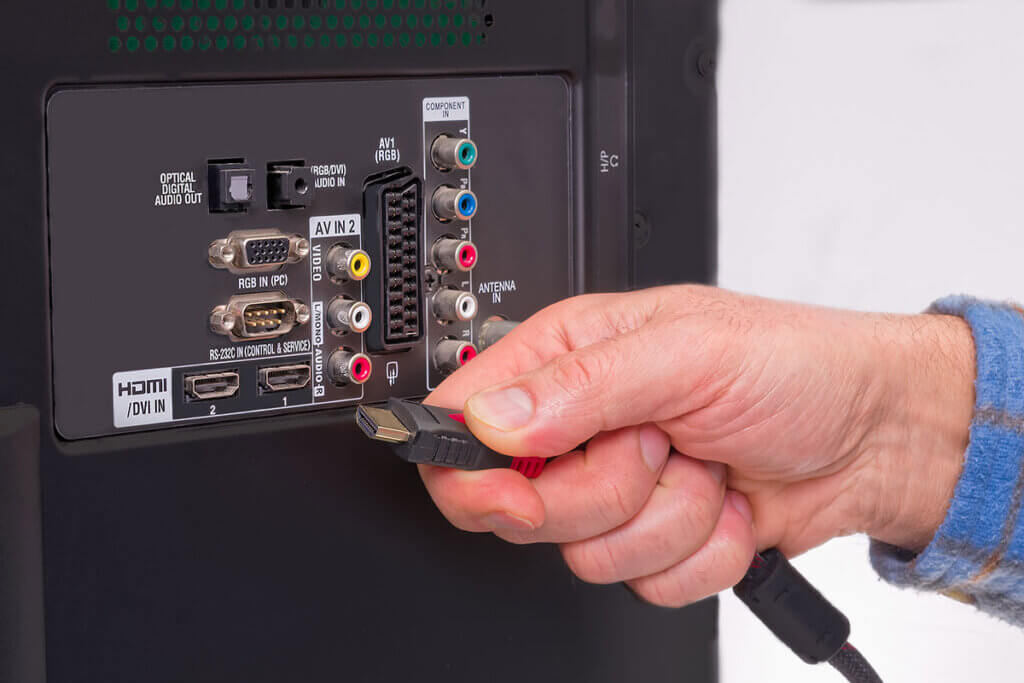
Audio output, MHL, USB and CI+ slot
If you attach great importance not only to the picture, but also to the sound quality, you cannot avoid connecting an external sound system. This can also be done via HDMI. If the connections are occupied or your own system does not offer a corresponding port, there are TV sets with optical digital output. A special optical fibre cable is required for this.
To connect an MHL-capable (Mobile Definition Link) device such as a tablet, camcorder or smartphone, some models have their own MHL input. If this is not available, at least one of the HDMI inputs should be marked with MHL. By using a special cable, users can establish a connection. If none of the HDMI ports is MHL, an MHL-HDMI adapter will help.
USB ports are an easy way to connect external devices such as hard drives, recorders and USB sticks to the TV. For many who have stored their film and photo material on external sources, this connection is useful. Some 65-inch TVs also offer the option of recording programmes on external storage media.
A slot for CI+ cards is available to enjoy the HD version of private TV channels such as Pro7 or RTL. For a monthly fee, users can purchase a card that allows them to receive these and other channels from the pay-TV range.
Further test reports
Please note: This is a comparison. We have not tested the 65-inch TVs ourselves.
Stiftung Warentest regularly tests current TV sets with different screen sizes. So far, the testers have put a total of 490 TVs under the microscope, including some 65-inch models. In the test, Stiftung Warentest evaluates the picture, sound, handling, versatility and environmental characteristics of the test candidates. The focus of the test is clearly on the picture, which accounts for 40 per cent of the overall rating. Among other things, three experts test and evaluate the picture quality of television via satellite, cable and antenna as well as the reproduction quality of photos.
The best TV currently equipped with OLED technology is the LG OLED65B97LA. The LG TV received the overall grade “very good” (1.4) in the test and impressed with its consistently very good picture quality. The versatility and range of functions of the remote control also scored points in the test. Only the operation of the set itself was found by the experts to be in need of improvement. Among the QLED sets, the Samsung GQ65Q90R came out on top. The test rating of “very good” (1.5) is due to the good to very good picture quality, which only shows slight weaknesses in bright surroundings. The testers found explicit praise for the sound quality of this model’s speakers.

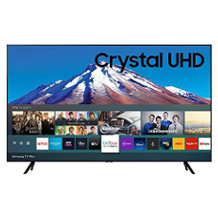
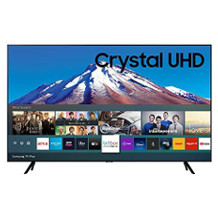
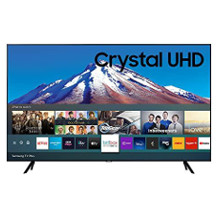
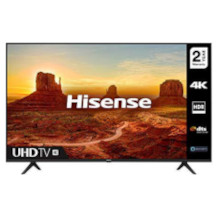
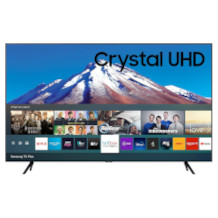
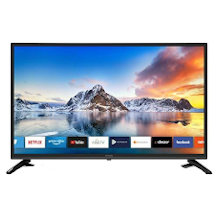
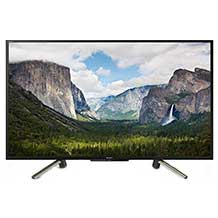
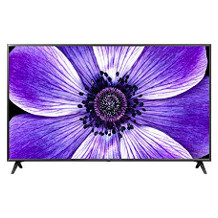
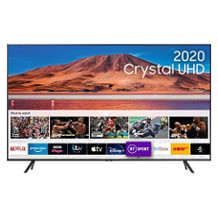

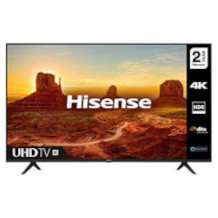
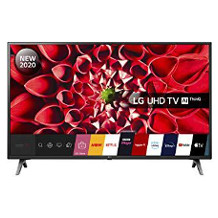
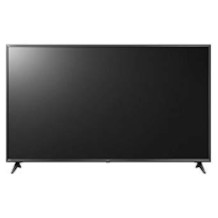

 296 reviews
296 reviews
